-
 bitcoin
bitcoin $110047.851143 USD
-1.37% -
 ethereum
ethereum $3727.617466 USD
-1.30% -
 tether
tether $1.000961 USD
-0.05% -
 bnb
bnb $1114.045467 USD
1.72% -
 xrp
xrp $2.343280 USD
0.14% -
 solana
solana $174.674876 USD
-5.85% -
 usd-coin
usd-coin $0.999999 USD
0.02% -
 tron
tron $0.311757 USD
-2.44% -
 dogecoin
dogecoin $0.183678 USD
-3.76% -
 cardano
cardano $0.627109 USD
-2.07% -
 ethena-usde
ethena-usde $1.000300 USD
0.15% -
 hyperliquid
hyperliquid $36.865760 USD
-2.74% -
 chainlink
chainlink $16.968918 USD
-1.48% -
 stellar
stellar $0.318159 USD
0.47% -
 bitcoin-cash
bitcoin-cash $500.637224 USD
-1.56%
What is a blockchain architect?
A blockchain architect designs secure, scalable systems by selecting frameworks, integrating with existing tech, and ensuring alignment with business goals.
Jul 29, 2025 at 10:36 am
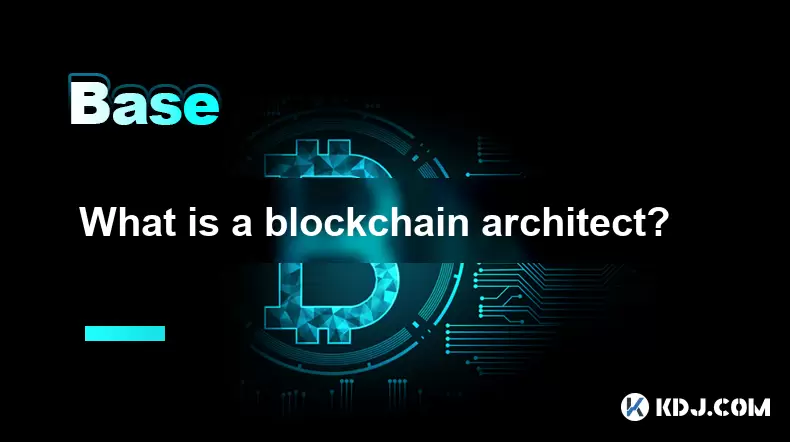
Understanding the Role of a Blockchain Architect
A blockchain architect is a specialized professional who designs and oversees the implementation of blockchain-based systems and applications. This role is critical in ensuring that blockchain solutions are scalable, secure, and aligned with business objectives. Unlike traditional software architects, blockchain architects must understand decentralized systems, consensus mechanisms, smart contracts, and cryptographic protocols.
The core responsibility of a blockchain architect is to define the overall structure of a blockchain system. This includes choosing the appropriate blockchain framework (public, private, or consortium), designing the data architecture, and integrating the blockchain with existing enterprise systems.
Key skills required for this role include deep knowledge of blockchain protocols, experience with smart contract development, understanding of cryptographic algorithms, and the ability to work with various consensus models like Proof of Work (PoW), Proof of Stake (PoS), and Delegated Proof of Stake (DPoS).
Responsibilities of a Blockchain Architect
The primary duties of a blockchain architect involve evaluating business needs and translating them into technical blockchain requirements. This includes selecting the right blockchain platform, such as Ethereum, Hyperledger Fabric, or Corda, depending on the use case.
System design and architecture play a central role in their work. They must define how nodes will interact, how data will be stored and secured, and how transactions will be validated across the network.
Security considerations are also paramount. Blockchain architects must ensure that the system is resistant to attacks like 51% attacks, Sybil attacks, and smart contract vulnerabilities. They often collaborate with cybersecurity experts to audit and harden the system against potential threats.
Technical Expertise Required for Blockchain Architects
To succeed in this role, a blockchain architect must possess a strong foundation in distributed ledger technology and its underlying components. This includes knowledge of cryptographic hashing, digital signatures, and peer-to-peer networking.
Smart contract development is another crucial skill. Architects must be proficient in languages like Solidity (used on Ethereum), Vyper, or Chaincode (for Hyperledger). They must also understand how to deploy and manage smart contracts securely.
Integration with legacy systems is often required in enterprise environments. Blockchain architects must be familiar with APIs, middleware, and off-chain data storage solutions like IPFS or Oracle services to bridge traditional systems with blockchain infrastructure.
Choosing the Right Blockchain Framework
Selecting the appropriate blockchain framework is one of the most critical decisions a blockchain architect makes. Public blockchains like Ethereum are ideal for decentralized applications (dApps) where transparency and decentralization are key. Private blockchains, such as those built on Hyperledger Fabric, offer greater control and privacy, making them suitable for enterprise use.
Consensus mechanisms also play a vital role in framework selection. For example, PoW is secure but energy-intensive, while PoS offers better scalability and energy efficiency. A blockchain architect must weigh these trade-offs based on the project's goals.
Performance and scalability considerations must also be evaluated. Layer-2 solutions like the Lightning Network or state channels may be necessary for high-throughput applications, while sharding or sidechains might be explored for large-scale systems.
Collaboration and Project Management in Blockchain Development
A blockchain architect does not work in isolation. They must collaborate with cross-functional teams, including developers, product managers, legal advisors, and compliance officers. This ensures that the blockchain solution adheres to regulatory standards and aligns with business goals.
Project planning and execution require the architect to define milestones, allocate resources, and manage timelines. Agile methodologies are often used to allow for iterative development and rapid adjustments based on feedback.
Testing and deployment phases are also overseen by the architect. They ensure that the system undergoes rigorous testing, including unit tests, integration tests, and security audits, before going live.
Common Challenges Faced by Blockchain Architects
One of the major challenges in blockchain architecture is balancing decentralization with performance. High levels of decentralization often come at the cost of slower transaction speeds and higher resource consumption.
Interoperability between different blockchain networks is another hurdle. As more blockchains emerge, ensuring seamless communication and data exchange between them becomes essential. Solutions like cross-chain bridges and interoperability protocols are often explored.
Regulatory compliance is also a significant concern, especially in sectors like finance and healthcare. Blockchain architects must navigate complex legal landscapes to ensure their systems comply with data protection laws and financial regulations.
- What are the educational requirements to become a blockchain architect?
- Which programming languages are essential for blockchain architects?
- How do blockchain architects ensure data privacy on public blockchains?
- What tools do blockchain architects commonly use in their workflow?
Most blockchain architects hold degrees in computer science, software engineering, information technology, or related fields. Advanced knowledge in cryptography, distributed systems, and network security is essential. Certifications from platforms like Coursera, Udemy, or industry-specific programs (e.g., Certified Blockchain Architect by Blockchain Training Alliance) can also enhance expertise.
Which programming languages are essential for blockchain architects?Blockchain architects should be proficient in languages such as Solidity (Ethereum), Go (used in Hyperledger Fabric), Rust (used in Solana and Polkadot), and JavaScript for front-end integration. Understanding scripting languages like Python and familiarity with tools like Truffle, Hardhat, and Remix is also beneficial.
How do blockchain architects ensure data privacy on public blockchains?To maintain privacy on public blockchains, architects may implement zero-knowledge proofs (ZKPs), use off-chain storage solutions, or integrate privacy-focused protocols like zk-SNARKs or zk-STARKs. They may also utilize permissioned blockchains or hybrid models that combine public and private elements.
What tools do blockchain architects commonly use in their workflow?Common tools include Truffle and Hardhat for smart contract development, Remix IDE for Ethereum-based coding, Hyperledger Caliper for performance benchmarking, and Ganache for local blockchain testing. Architectural design tools like Lucidchart and draw.io are also used for visualizing system components and interactions.
Disclaimer:info@kdj.com
The information provided is not trading advice. kdj.com does not assume any responsibility for any investments made based on the information provided in this article. Cryptocurrencies are highly volatile and it is highly recommended that you invest with caution after thorough research!
If you believe that the content used on this website infringes your copyright, please contact us immediately (info@kdj.com) and we will delete it promptly.
- XRP Price Prediction: Weekend Rollercoaster or Rally?
- 2025-10-12 08:45:16
- Bittensor (TAO): Super Bullish Signals Point to Potential 2x Rally
- 2025-10-11 10:25:12
- Silver Price Correction: Navigating the Dip & Identifying Key SEO Keywords
- 2025-10-11 10:25:12
- Decoding Crypto Trends: Bittensor's Bull Run, Cardano's Dip, and LivLive's Presale Buzz in 'Uptober 2025'
- 2025-10-12 08:45:16
- MoonBull: The Crypto Meme Coin Promising 1000x Gains?
- 2025-10-11 10:30:01
- Crypto Payroll Revolution: Stablecoins, Altcoins, and the Future of Salary Payments
- 2025-10-11 10:30:01
Related knowledge
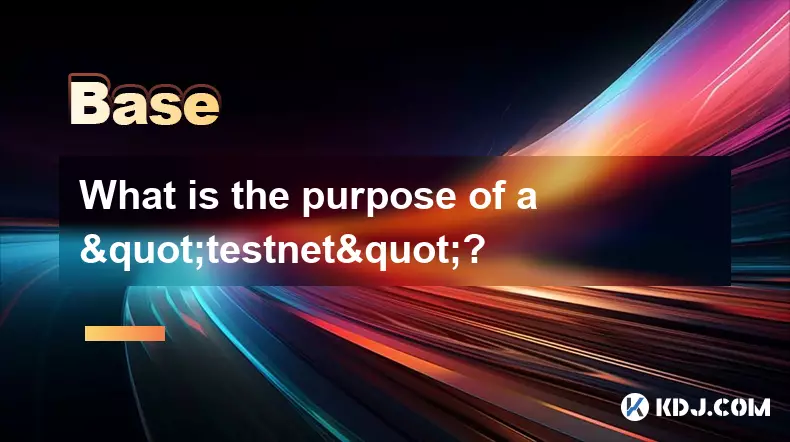
What is the purpose of a "testnet"?
Oct 12,2025 at 09:01am
Understanding the Role of Testnets in Blockchain Development1. A testnet serves as a parallel version of a blockchain network, designed specifically f...

What is "EIP-1559" and how did it change Ethereum?
Oct 12,2025 at 03:00am
Understanding EIP-1559 and Its Core Mechanism1. EIP-1559 is a protocol upgrade introduced to the Ethereum blockchain as part of the London hard fork i...
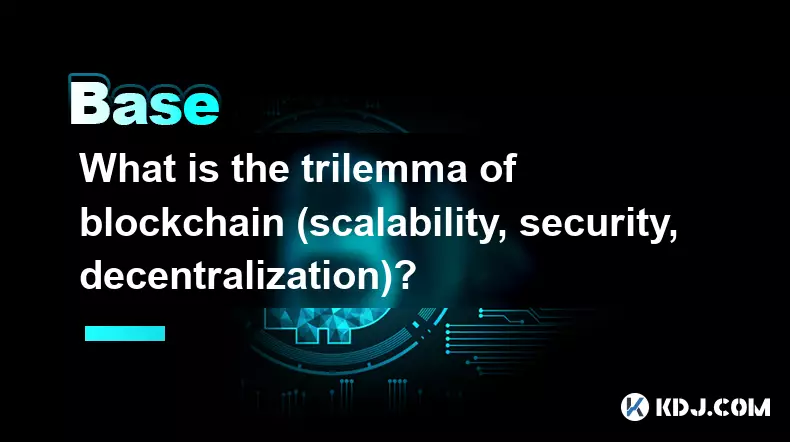
What is the trilemma of blockchain (scalability, security, decentralization)?
Oct 11,2025 at 10:36am
Understanding the Blockchain TrilemmaThe blockchain trilemma is a concept that highlights the inherent challenge in simultaneously achieving three cor...
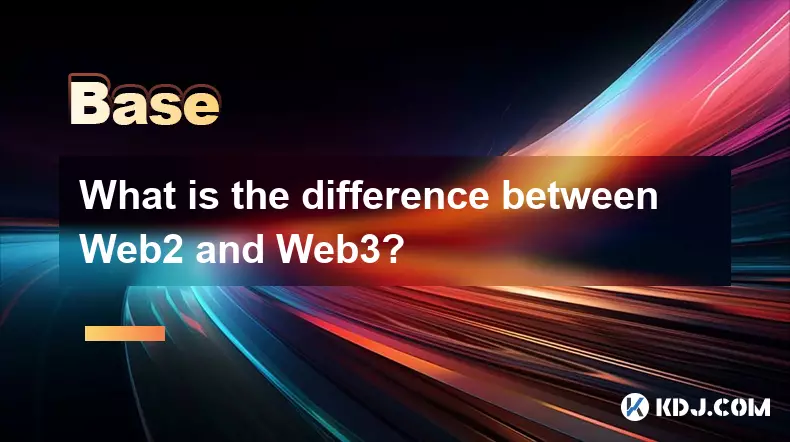
What is the difference between Web2 and Web3?
Oct 11,2025 at 03:19pm
Understanding the Structural Shift from Web2 to Web31. Web2 is characterized by centralized platforms where large corporations control user data, cont...
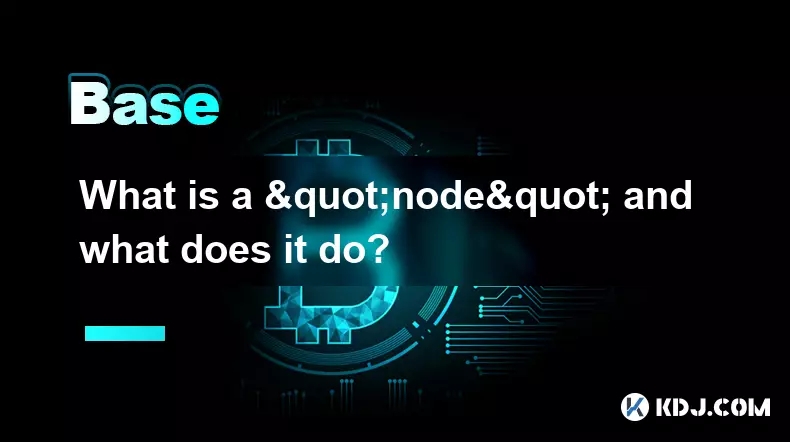
What is a "node" and what does it do?
Oct 10,2025 at 02:54pm
Understanding the Role of a Node in Blockchain Networks1. A node refers to any computer or device that participates in a blockchain network by maintai...

What is a "peer-to-peer" (P2P) network?
Oct 12,2025 at 04:54am
Understanding Peer-to-Peer Networks in the Cryptocurrency EcosystemA peer-to-peer (P2P) network is a decentralized infrastructure where participants, ...

What is the purpose of a "testnet"?
Oct 12,2025 at 09:01am
Understanding the Role of Testnets in Blockchain Development1. A testnet serves as a parallel version of a blockchain network, designed specifically f...

What is "EIP-1559" and how did it change Ethereum?
Oct 12,2025 at 03:00am
Understanding EIP-1559 and Its Core Mechanism1. EIP-1559 is a protocol upgrade introduced to the Ethereum blockchain as part of the London hard fork i...

What is the trilemma of blockchain (scalability, security, decentralization)?
Oct 11,2025 at 10:36am
Understanding the Blockchain TrilemmaThe blockchain trilemma is a concept that highlights the inherent challenge in simultaneously achieving three cor...

What is the difference between Web2 and Web3?
Oct 11,2025 at 03:19pm
Understanding the Structural Shift from Web2 to Web31. Web2 is characterized by centralized platforms where large corporations control user data, cont...

What is a "node" and what does it do?
Oct 10,2025 at 02:54pm
Understanding the Role of a Node in Blockchain Networks1. A node refers to any computer or device that participates in a blockchain network by maintai...

What is a "peer-to-peer" (P2P) network?
Oct 12,2025 at 04:54am
Understanding Peer-to-Peer Networks in the Cryptocurrency EcosystemA peer-to-peer (P2P) network is a decentralized infrastructure where participants, ...
See all articles










































































